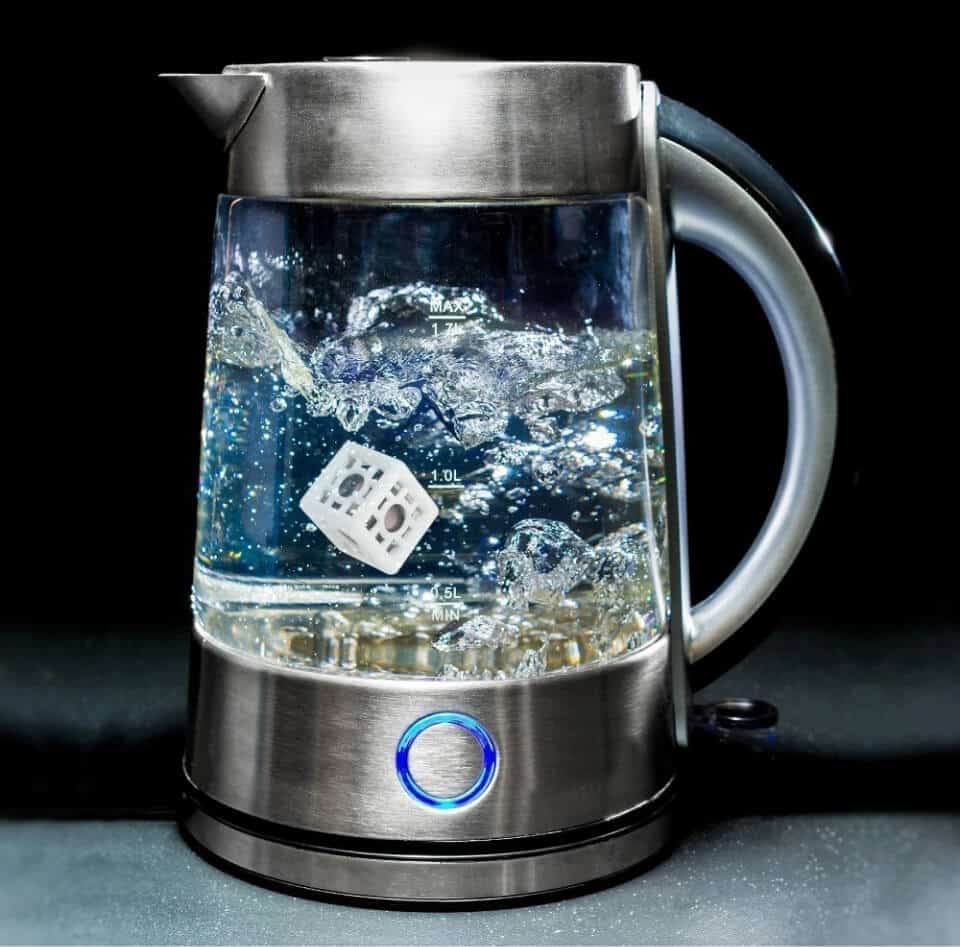
Descaling a kettle – tips and tricks

Kettles often suffer from limescale damage
Everyone probably immediately conjures up an image of a limescale-covered kettle. But why are kettles so often affected by limescale damage? The reason is the high temperatures prevailing in the kettle. The water in it becomes "stressed" and becomes unbalanced. As a result, certain water particles are missing to absorb the limescale. The result – limescale can build up and significantly reduce the lifespan of the kettle.
Descaling kettle – Tip number 1 citric acid
If the kettle is built up with limescale, adding lemons or citric acid can successfully remove the limescale. They also give off a fresh scent. So halve a standard lemon and rub the kettle with it. Gently press so that the juice from the lemon can escape. Finally, rinse the kettle thoroughly with water. If the limescale in the kettle proves stubborn, you can use pure citric acid, which is available in powder or liquid form. Fill the kettle almost to the rim with water and add 4 tablespoons of citric acid. Stir and let it sit for 1-2 hours. Then rinse the kettle thoroughly and check whether the limescale deposits have disappeared.
Tip number 2 – Descale kettle with baking soda
Baking soda is also a good way to descale your kettle. Add approximately 20 grams of baking soda to the kettle and fill it with approximately 200 ml of water. Turn on the kettle and bring the baking soda mixture to a boil. Make sure you keep an eye on the kettle. Baking soda can fizz vigorously when mixed with water and cause it to boil over. Once the baking soda mixture has successfully boiled, turn off the kettle and let it sit for about an hour. Then rinse the kettle thoroughly with clean water.
Descaling kettles with vinegar is our tip number 3
Vinegar (acidity of 5-15 percent) or vinegar essence (acidity of up to 25 percent) contain a lot of acid, which can dissolve limescale. Therefore, try adding two tablespoons of vinegar essence to your kettle, plus a glass of water. Stir the vinegar mixture thoroughly and bring it to a boil. As with the other two tips for descaling a kettle, let the mixture sit for an hour. Then rinse the kettle thoroughly and check if the limescale has dissolved.
Aspirin – our tip number 4 for descaling the kettle
Aspirin, well-known as a headache remedy, can also help descale your kettle. The acetylsalicylic acid contained in aspirin can dissolve deposits and thus remove limescale from the kettle. To do this, dissolve an aspirin tablet in a glass of water and bring it to a boil. Let the liquid sit for about half an hour, then rinse the kettle thoroughly.
Our ultimate final tip – prevent with the vodaclean KalkStopp Home mini
Our final tip for the Limescale in the water The key to preventing limescale buildup is the vodaclean KalkStopp Home mini. Simply add the small cleaning cube to the kettle and you're done. The innovative and patented technology of the cleaning cube ensures that the water, stressed by heat, is restored to its equilibrium and can continue to absorb limescale due to its increased dissolving capacity. As a result, limescale can no longer settle in the kettle. Descaling water in the kettle has never been so easy. Let our Limescale water filters Convince yourself and significantly increase the lifespan of your kettle. The KalkStopp Home Mini is available starting at just €29.99, including VAT.

